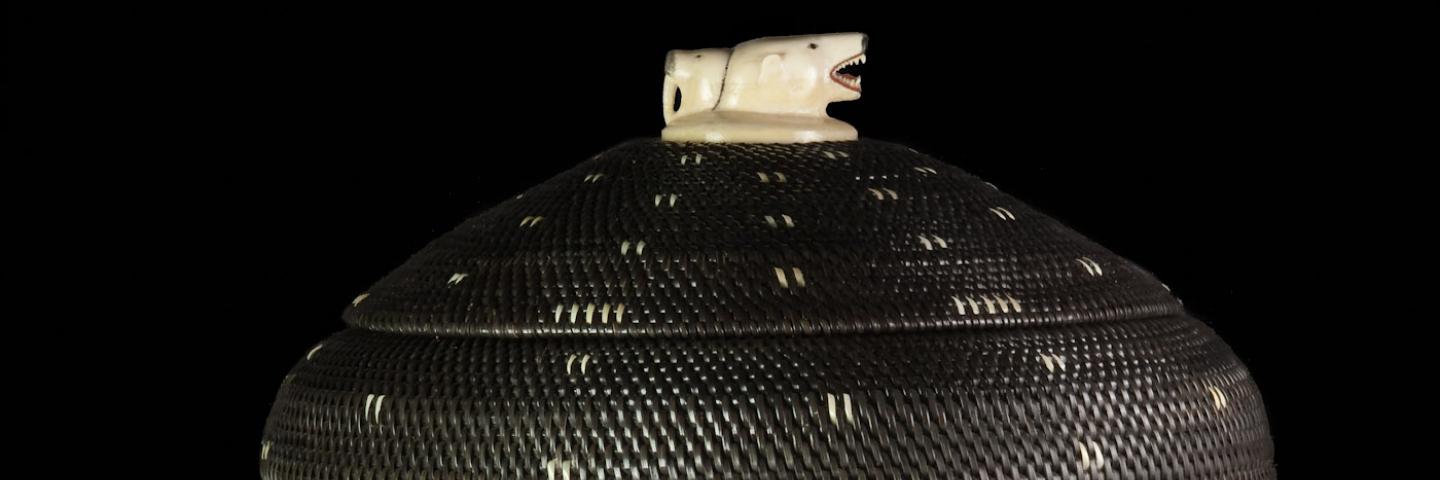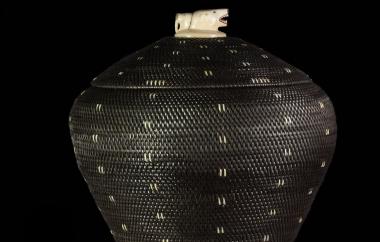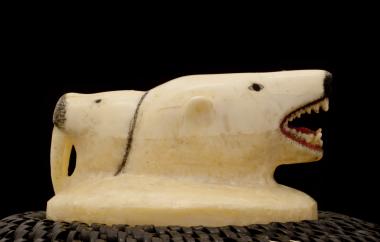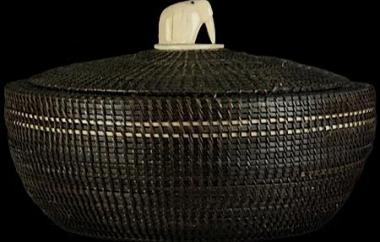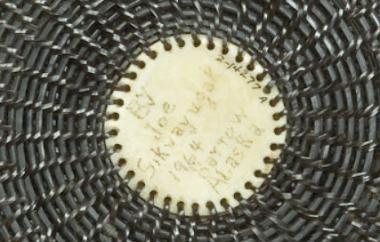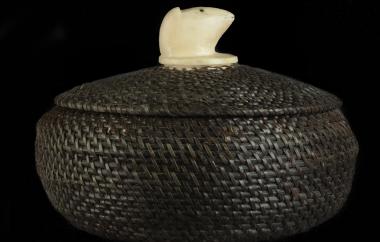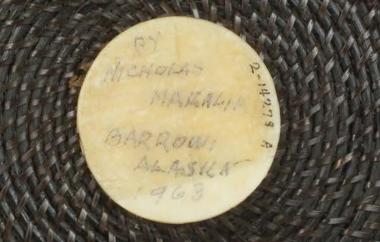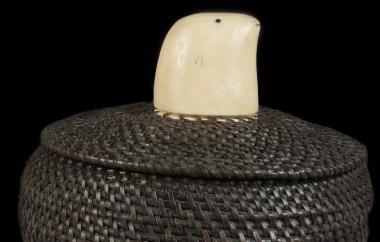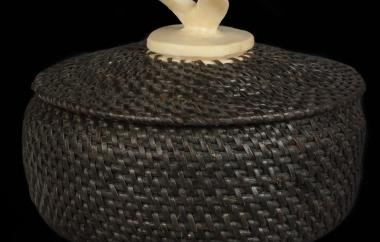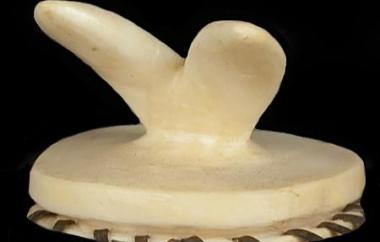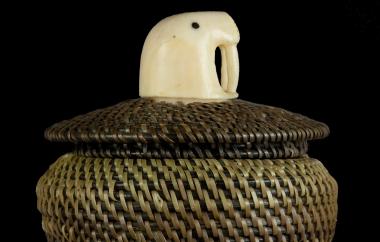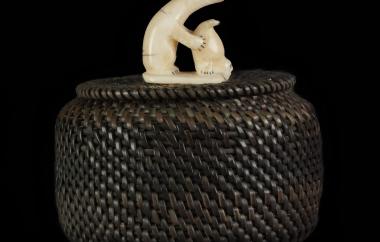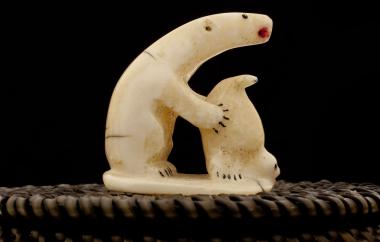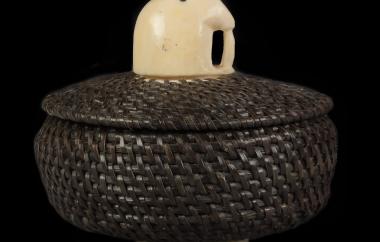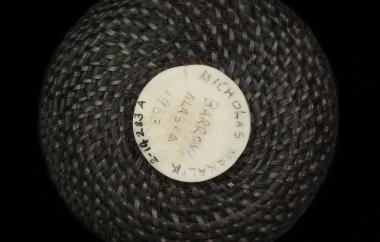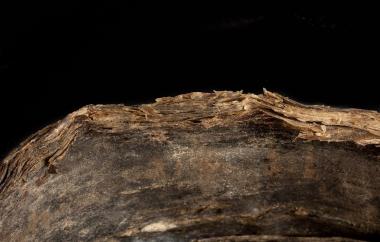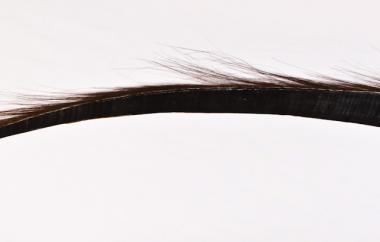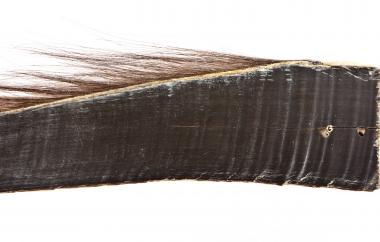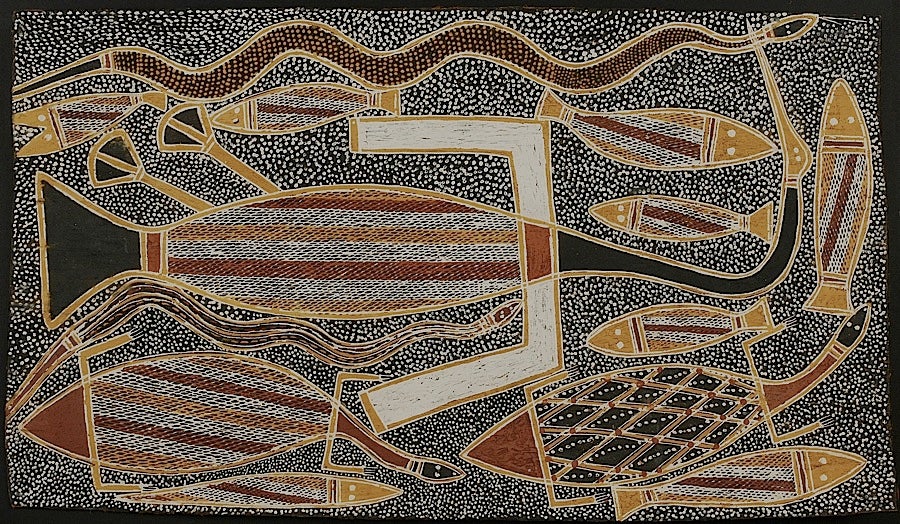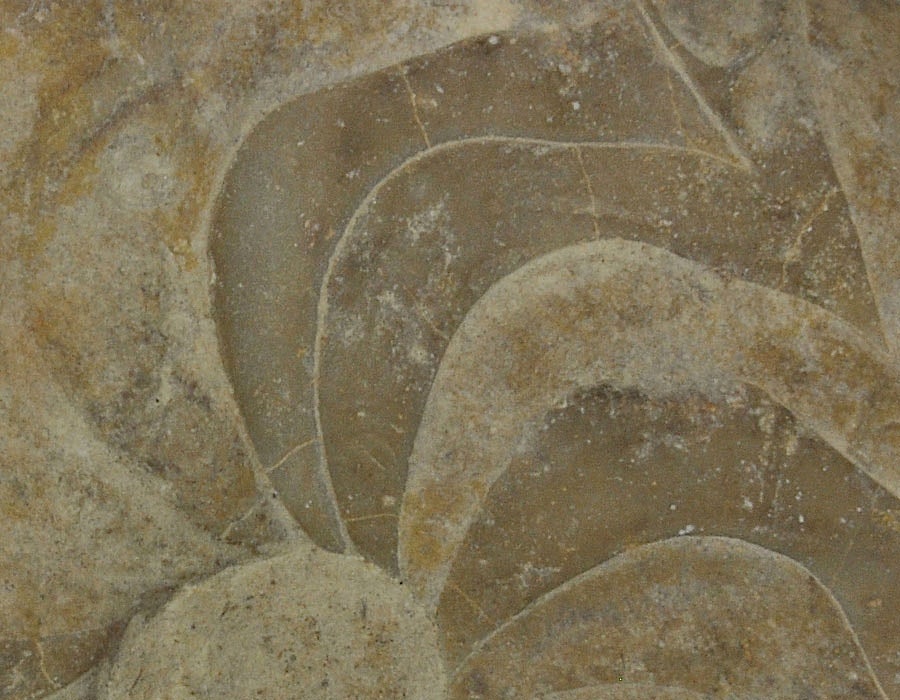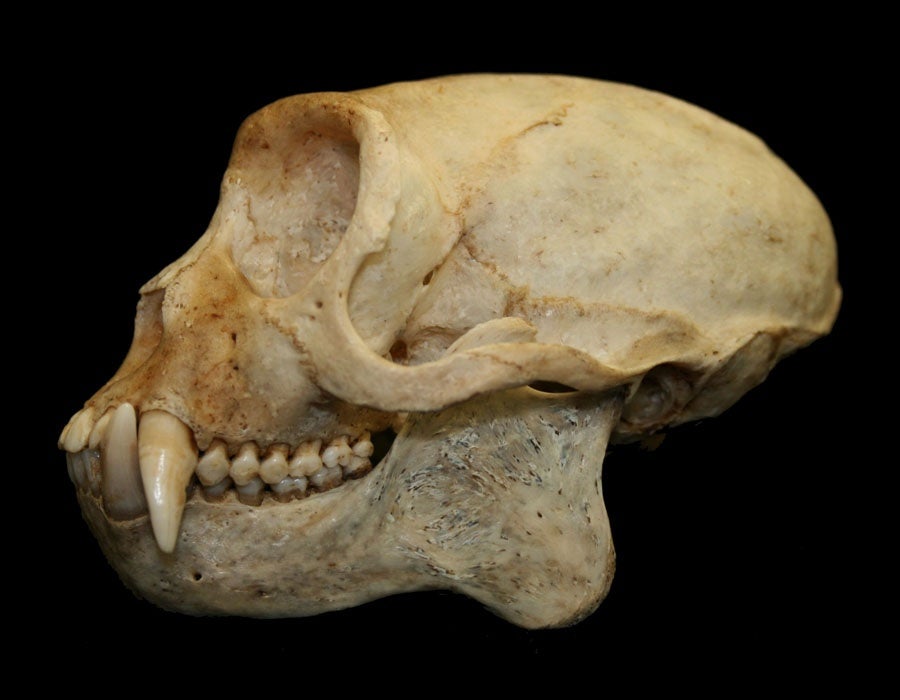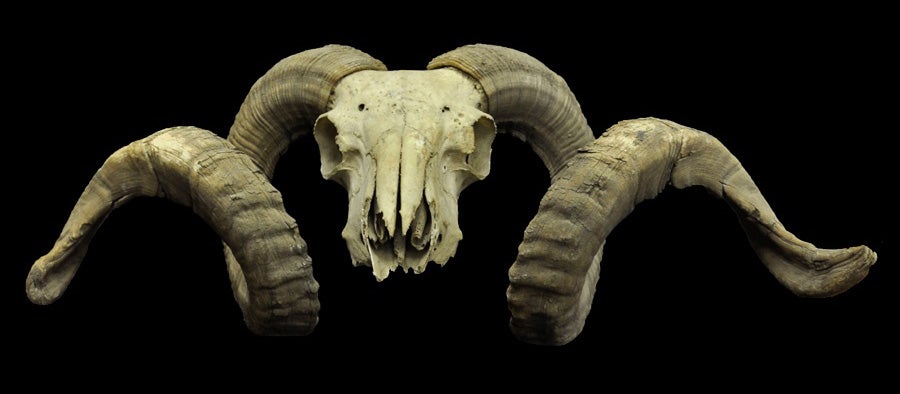Baleen, also known as whalebone, is a tough keratinous substance from the mouths of filter-feeding whales. In texture, it is comparable to modern plastics and has long been used by Native Arctic peoples to make buckets, cups, and other containers as well as ice scoops, sled runners, fish line, lashing, and nets. Coiled baleen baskets are a recent adaptation from traditional coiled willow-root baskets. They were first produced between 1914 and 1918, predominantly for a tourist market. Over time, distinctive styles have developed, and since the 1970s more women have become involved in what was a predominantly male occupation.
Some of the coiled baleen baskets in the museum’s collections are featured in this web gallery. They were made by Abe Simmonds, Joe Sikvayugak, and Nicholas Makalik, of Barrow, Alaska; and by George Omnik and Hubery Koonuk of Point Hope. Where known, dates are between 1954 and 1965.
Images © UO Museum of Natural and Cultural History. Production of this gallery received generous funding from The Ford Family Foundation.
Further Reading:
Lee, Molly.
1998 Baleen Basketry of the North Alaskan Eskimo. University of Washington Press, Seattle.
Catalog #2-14276a
Coiled Baleen Basket by Abe Simmonds
Barrow, Alaska, 1954
12” diameter
Catalog #2-14276b
Baleen Basket Detail. Polar Bear Head Finial.
Basket materials: Whale baleen, ivory, and feather quill.
Catalog #2-14277a
Coiled Baleen Basket by Joe Sikvayugak
Barrow, Alaska, 1964
12” diameter
Catalog #2-14277b
Baleen Basket Detail.
Ivory Starter with Artist’s Identification.
Basket materials: Whale baleen, ivory, and feather quill.
Catalog #2-14278a
Coiled Baleen Basket by Nicholas Makalik
Barrow, Alaska, 1963
6” diameter
Catalog #2-14278b
Coiled Baleen Basket Detail.
Ivory Starter with Artist’s Identification.
Basket materials: Whale baleen and ivory.
Catalog #2-14279
Coiled Baleen Basket by Nicholas Makalik
Barrow, Alaska, 1965
5” diameter
Catalog #2-14279
Baleen Basket Detail. Seal Head Finial.
Basket materials: Whale baleen and ivory.
Catalog # 2-14280a
Coiled Baleen Basket by Nicholas Makalik
Barrow, Alaska, date unknown
4” diameter
Catalog #2-14280b
Baleen Basket Detail.
Whale Fluke Finial.
Basket materials: Whale baleen and ivory.
Catalog #2-14281a
Coiled Baleen Basket by Nicholas Makalik
Barrow, Alaska, date unknown
4” diameter
Catalog #2-14281b
Baleen Basket Detail, Halrus Head Finial.
Basket materials: Whale baleen and ivory.
Catalog #2-14282a
Coiled Baleen Basket by George Omnik
Point Hope, Alaska, date unknown
4” diameter
Catalog #2-14282b
Baleen Basket Detail. Polar Bear and Seal Finial.
Basket materials: Whale baleen and ivory.
Catalog #2-14283a
Coiled Baleen Basket by Nicholas Makalik
Barrow, Alaska, 1963
4” diameter
Catalog #2-14283a
Baleen Basket Detail. Ivory Starter with Artist’s Identification.
Basket materials: Whale baleen and ivory.
Catalog #2-15470
Bent Baleen Vessel, Punuk Islands, Alaska, maker and date unknown
6” long
Catalog #2-15470
Baleen Vessel Detail. Fibrous Baleen.
Vessel materials: Whale baleen and wood.
Single Baleen Plate, Alaska, 32” long
Baleen Plate Detail. To prepare for coiling, plate must be soaked, longitudinally split, scraped, cut into strands and smoothed.
